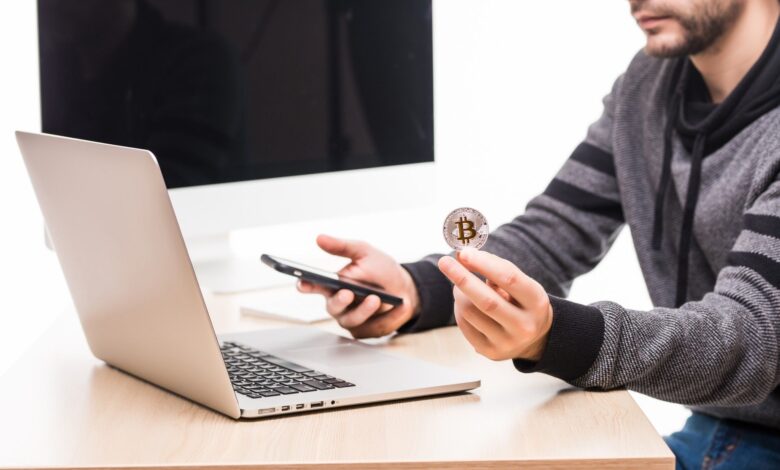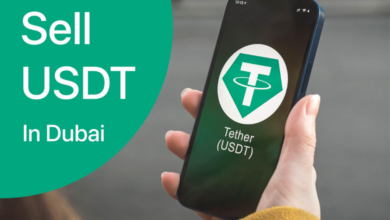Are Centralized Exchanges Safe for Cryptocurrency Transactions?

There seems to be a ton of talk surrounding the role played by centralized exchanges (CEX) when it comes to cryptocurrency transactions, trading, holding, and wallets in general. Well, what’s it all about? Are they actually safe?
As you’ll find out in this article, it’s generally not advised to go with a centralized exchange to keep your hard-earned money. Not your keys? Not your wallet!
But that doesn’t apply to everybody. For example, an intra-day trader will find it significantly easier to trade on a centralized exchange with the option of multiple currencies, faster transactions, lower fees, better rates, etc.
We’re going to hit the question from every angle so you can develop a robust and comprehensive understanding of centralized exchanges and their downsides. Let’s begin with the description of what a centralized exchange even is.
What is a Centralized Exchange? What’s the Alternative?
A centralized exchange is a company or platform that allows you to buy or sell cryptocurrencies. You use them much like any e-commerce website: Make an account and pay them through a card or another payment method.
Once your account is ready and money deposited, you can buy any listed cryptocurrency at the going price, which is usually quite close to the market rate.
Examples of centralized exchanges include Binance, Coinbase, Kraken, Bybit, KuCoin, OKX, Bitstamp, and Bitfinex.
However, here are a few things to keep in mind:
- Registering on a centralized exchange requires you to give them your information. If you prioritize anonymity, this “KYC” process is not going to be the best. They will ask for credentials as well as photos and any government-issued IDs.
- As these are companies working in a country, they are bound by the land’s laws. As such, if a government or regulator so wishes, they can demand information on the biggest spenders or traders, for example, and the centralized exchange will have to front the information readily.
On the other hand, you have decentralized exchanges, shortened to “DEX.” These include platforms like dYdX, Kine Protocol, Uniswap v3, Balancer v2, Curve, Apex, PancakeSwap, Maverick, Perpetual, and THORChain.
A decentralized exchange is not centrally controlled by a company but run by all of its users. These might not be for everyone, and those who aren’t tech-savvy and refer to professional help with cryptocurrency tend to steer clear of DEXes. And if you’re one of those, you should seek guidance with smart contract and liquidity risks, involved in DEXs.
CEX vs. DEX
Centralized exchanges need you to do extensive KYCs and are under the complete control of governments and regulators. A DEX can often offer a more anonymous, secure, stable, and faster way to transact.
However, centralized exchanges are more convenient and easier to use. DEXes tend to be mechanically less user-friendly.
- If you want to buy or sell large sums, we recommend going with a DEX. Take the time to learn the platform and its workings before you make any deposit.
- If you want to trade or buy/sell very small amounts that you might take out sooner than later, we recommend the convenience of a centralized exchange.
Even if you use a centralized exchange, keep in mind that it’s not your money if it’s in the platform’s wallet. Your wallet (which can be hardware-based like Trezor, app-based like Electrum, or browser-based like MetaMask) protected with your seed phrase is the only wallet that is 100% yours.
So, make sure you withdraw the amount to your own wallet when it’s time to! It won’t matter what BTC will be worth in 10 years if it’s not accessible.
The Third Option
The several crypto booms created the need for user-friendly platforms, as not everyone getting into crypto was tech-savvy. New users didn’t even like, for example, the necessity to have a 12-word seed phrase that must be kept safe, preferably written on paper and locked inside a locker.
It’s a time of one-click account sign-ups and fast banking—And people expect the same level of user-friendliness and convenience even with their cryptocurrency accounts. We’re not going to argue about this, but suffice it to say that the proliferation in centralized exchanges was brought up by the increase in less tech-savvy people investing, trading, or holding cryptocurrencies.
Before that, cryptocurrencies used to be transacted peer-to-peer almost exclusively. The P2P system was all about a simple transaction between two cryptocurrency wallets. If you want to buy cryptocurrencies, you’ll go to a P2P marketplace and find a seller who is giving you a fair rate and a payment method that’s convenient for you.
P2P marketplaces have more or less become extinct, but a few exist and are a great way to sell cryptocurrencies as they offer better returns, generally speaking. They are also safe from the shortcomings of centralized exchanges and often easier to use than a decentralized exchange.
Today, even centralized exchanges like Binance and OKX have started providing P2P services, whereas a few reliable ones like LocalBitcoin have discontinued. Paxful (for BTC) and LocalCoinSwap (for BTC, ETH, USDT, USDC, DAI, NEXO, BNB, BUSD, TRX, CELO, etc.) remain to be good options that you can check out.
Wrapping Up
The world of cryptocurrencies has evolved a lot. With centralized exchanges, decentralized exchanges, traditional P2P exchanges, and the modern variants of KYC-enabled P2P marketplaces, you have a plethora of options when it comes to buying and selling cryptocurrencies.
What you choose depends largely on your requirements and preferences. Hopefully, our guide helped you debunk any myths and answer any queries that you had.



